#icelandic mythology
Text

Midnight Selkie 🌘
#selkie#selkie kin#selkie aesthetic#sealwoman#folklore#otherkin#kin moodboard#moodboard#kin aesthetic#kin#otherkin moodboard#otherkin aesthetic#otherkind#aesthetic#therian#aethstetic#folklore aesthetic#iceland#icelandic mythology
112 notes
·
View notes
Text

Askjell Gudmundsson, an enslaved Svartálfar engineer in a draugr-making factory, and a very interesting coin he's just found during a routine inspection.
#artists on tumblr#oc art#norse mythology#svartalfheim#the bindrune is an Icelandic 17th century one used both for necromancy and for warding off evil spirits#kinda failsafe one if you ask me#norse runes#elder futhark#icelandic mythology#aodhan erbnen
9 notes
·
View notes
Text
Another sea beast from Librum Prodigiosum! The Múshveli, from Icelandic mythology! This is a large and dangerous ‘mouse whale’ which is said to be able to swallow a rowboat whole! With a long tail to swim at incredible speeds!

#digital art#digital illustration#fantasy#art#folklore#mythology#librum prodigiosum#monster#mythical creatures#creature#artists on tumblr#mythology art#icelandic mythology#múshveli#mushveli#sea monster#mythologyart
71 notes
·
View notes
Text

#yuletime#yule cat#icelandic folklore#icelandic mythology#winter solstice#traditional art#watercolor#drawing#my art#artists on tumblr#illustration#happy yule#yule
73 notes
·
View notes
Text

Raudkembingur has bitten me twice this morning alone. 😡
#wormsandbones#homemade horrors#anime north#dragon#art doll#handmade#icelandic mythology#mythology#this jerk
117 notes
·
View notes
Photo

The Skoffín [Icelandic folktales]
Arctic foxes are small predatory mammals native to Iceland. Cats, on the other hand, are not native there and were introduced by humans. There is a local legend about a male arctic fox that bred with a female cat (note: this is not biologically possible, these two animals can’t produce offspring in real life). The result was a litter of Skoffíns, supernatural monsters that were incredibly dangerous. It is said that these creatures could somehow kill people by looking directly at them.
In one tale, all the people who exited a church building immediately dropped dead. The church’s priest correctly assumed that there must be a Skoffín sitting on the roof beam of the building. He thought of a solution and held up a large mirror when exiting the building. The Skoffín, having looked its own reflection in the eyes, immediately died.
Source:
https://grapevine.is/mag/articles/2008/09/03/more-monsters-and-mythical-beings-skoffin/
(image source: a postal stamp from 2009 depicting a Skoffín. It was part of a series of stamps with local mythical creatures on them)
77 notes
·
View notes
Text
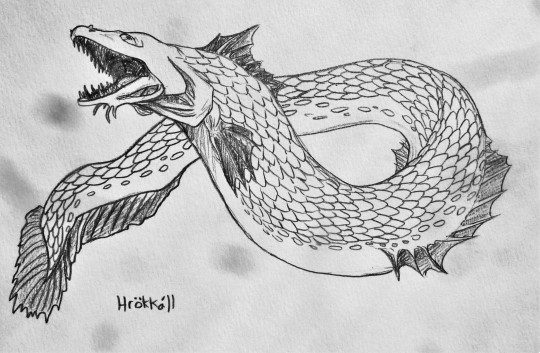
Ancardia's Unusual Animals--the Hrökkáll
Classification: Beast (fish)
Habitat: Deoxygenated and polluted pools and wetland ranges in Tvearban and northern Akimmia.
The Hrökkáll is an unusual fish native only to certain northerly areas of the world, which while commonly described as an eel, is truthfully closer in relation to a muskellunge. At full size, this creature of shallow polluted pools and acidic wetland waters measure only about 55 centimeters, and in the spring thousands of squirming juveniles can be found which measure about 2 centimeters in length. The Hrökkáll is the subject of a number of superstitions among the Isyldweragh and the Hurthlings of the Helm of the East region, chiefly of their being an omen of death or a bringer of bad luck. This perhaps has more to do with the habitat of the Hrökkáll, which can include secluded ponds and pools made completely toxic and impotable by mineral intrusion from arsenic, lead, and cinnabar (mercury) deposits close to the surface rather than the fish itself. The wiser Ice Dwarf or Highrock Hurthling realizes that the fish comes after the noxious pools, and simply knows better than to draw water or catch the fish of the polluted pools and fens.
This elongate and heavy-scaled fish species is a predator, mostly targeting flying insects, small frogs and salamanders, and low-flying birds such as plovers and kingfishers. They grow somewhat stunted in places of high mineral pollution, but seem to be well-adapted to surviving in such adverse conditions. Their general submersion in acidic or toxic water protects them from many predators, and most live their whole 7 to 8 year lifespans in the same pools snatching mayflies and mosquito larva from the surface in spring and ambushing migratory birds skimming the water and the more foolish amphibians on the shores in autumn. Their juveniles, which hatch from eggs suspended from the stems of cattails, reed, and other water-loving plants at a few inches above water level, are sometimes taken by kingfishers and wandering gulls and seabirds, and in their wetland habitat the younger Hrökkáll less than 15 centimeters in length are often attacked by marsh-dwelling herons and snapping turtles, though somewhat rarely. The flavor of Hrökkáll flesh from the wetland-dwelling individuals is still said to be somewhat foul and metallic, with a constant aftertaste like clotted blood and something burnt no matter what cooking method and what spices are added to it. For this reason, whenever a Hrökkáll specimen is ever killed by locals, the flesh is generally ground up for either fertilizer or bait for other animals, and the only portions used by humanoids are the strong ribs and ray fins for primitive sewing needles, fishing tackle, and the hide and scales as a thin but tough leather used for belts, knuckle-guards, and some decorative features.
Hrökkáll are neither particularly social or anti-social—usually content to bask along the surfaces of their native bogs and pools. In some situations, these fish can be densely packed at fifteen to a square meter, at which point some fighting can occur but is usually resolved by a number of the Hrökkáll leaping onto land and wriggling to a neighboring pool or fens. This species is hardy, not only surviving high levels of metallic toxins and acidity but able to live for up to three hours outside of water, provided the humidity is high. In other situations, particularly in warmer, murkier waters, Hrökkáll have been known to turn cannibalistic very quickly if risk of overcrowding looms, though this is a stress behavior and not otherwise seen in healthy limited populations. On rare other occasions, inexperienced brown bears may attack a great many of these fishes in a small pool by opportunity, only to realize after consuming one that they are highly toxic and unpalatable.
#ancardia#ancardian homebrew#bestiary#mixed media#creatures#animals#Ancient Domains of Mystery#ADOM#Dnd-like#Hrökkáll#Icelandic mythology#poison pool fish
7 notes
·
View notes
Text
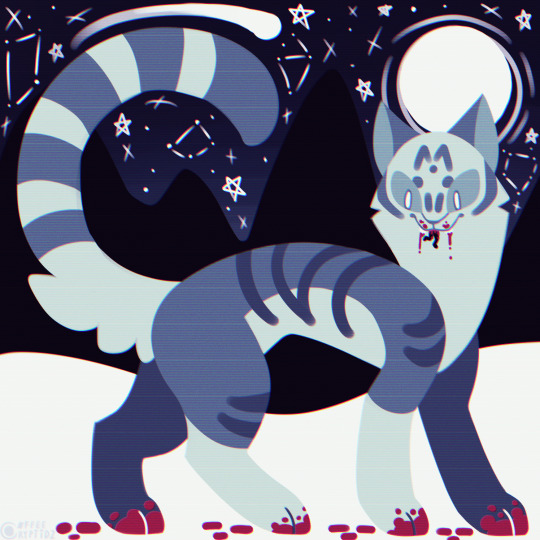
Merry bloody Christmas!
Ngl, that giant cat who eats people for not getting any clothes from Christmas is underrated sjhskzhbafhdhbulhdsaIDUFLd.
(Don't tag this as vore plz. This is not a fetish art and I am a minor)
#Blood cw#Gore tw#Eaten alive tw#artists on tumblr#coffee drew somethin'#art#Christmas#Icelandic mythology#folklore#myth#mythology#fantasy#cat#fantasy art#winter#X-mas#The Yule cat#Animal art#digital art#giant cat#night
6 notes
·
View notes
Text

Mikladalur's Kopakonan on the Faroe Islands
1K notes
·
View notes
Text

The Wolves Pursuing Sól and Máni, J.C. Dollman, 1909
Hati and Sköll chase the sun and the moon in H.A. (Hélène Adeline) Guerber's Myths of the Norsemen from the Eddas and Sagas.
#art#illustration#mythology#norse mythology#wolves#black and white#j.c. dollman#1900s#hati and sköll#sól and máni#sun and moon#h.a. guerber#myths of the norsemen#eddas and sagas#internet archive#books#icelandic literature#literature#myths#myths and legends
75 notes
·
View notes
Text
All right, so we've seen this post by @fuckyeahcoffeeandequality
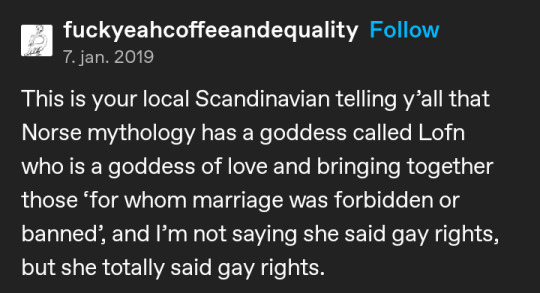
And they're absolutely correct. Some people actually say that Lofn and other goddesses are just different names or aspects of Frigg and/or Freyja, but I am wary of these claims since there are very few sources for norse mythology and there could be many reasons why there is much less written about the goddesses than the gods. But that's just me, and I am by no means an expert in the field. Snorri's Edda does say that Lofn unites those for whom marrige is forbidden, though, and that sounds pretty gay.
A little digression, bear with me I promise I have a point. Lavender has been used as a symbol for homosexuality and queerness for quite some time, and the colour purple even longer. "The Lavender Scare", "Lavender Menace" and "lavender marrige" are all terms and names from queer history, and the colour and the flower came to be empowering for queer people.

WELL
In Icelandic, the name for lavender is 'lofnarblóm', literally translated as 'the flower of Lofn'. The plant is not native to the island and the word seems to be quite recent (the first written example of it I can find is from 1986), in all the other nordic languages they call it some sort of variation of lavendel, except for Faroese, where it appears to be called 'bath plant' (I'm so sorry, I don't speak Faroese). There are a few other words that start with lofnar-, most likely as a reference to the goddess, but most of them seem to be rather old and/or uncommon. I have no idea why 'lofnarblóm' was chosen as a translation for lavender. Knowing icelandic history, the queer connotation was probably not on purpose, but I can't help but get excited about the connection.
TL;DR: Lavender (aka the gay flower) is named after Lofn (aka the gay goddess in norse mythology) in icelandic
#queer history#lavender#linguistics#if anyone has anything to add#please do#night watch posting#it is seven in the am and i am going to bed#queer symbolism#gay#lgbtq#Icelandic#norse mythology#pride
279 notes
·
View notes
Text

Iceland Volcano Lava Eruption Litli-Hrútur 2023 Reykjanes Peninsula Reykjavik IS Mavic 3 Pro Cine Fine Art Aerial Landscape Photography Iceland!
Elliot McGucken Master Fine Art Nature Photographer
By 45SURF Hero’s Odyssey Mythology Photography


#4surf hero's odyssey mythology photography#elliot mcgucken master fine art nature photographer#photographer#iceland#volcanic eruption#lava#litli hrútur#volcano#reykjanes peninsula#reykjavik#aerial landscape#nature
96 notes
·
View notes
Text
An unusual beastie from Librum Prodigiosum ! The Skeljaskrímsli, A cryptid from Iceland! First sighted in the 18th century, this beast is said to be as large as a hippo, lives near water and uses its claws for purchase during storms!
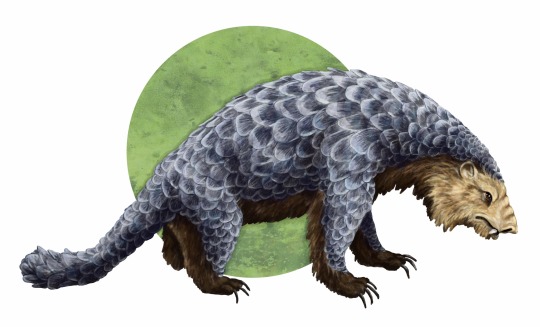
#digital art#digital illustration#fantasy#art#folklore#mythology#monster#librum prodigiosum#mythical creatures#creature#artists on tumblr#mythology art#mythologyart#cryptid art#Skeljaskrímsli#icelandic mythology
48 notes
·
View notes
Photo

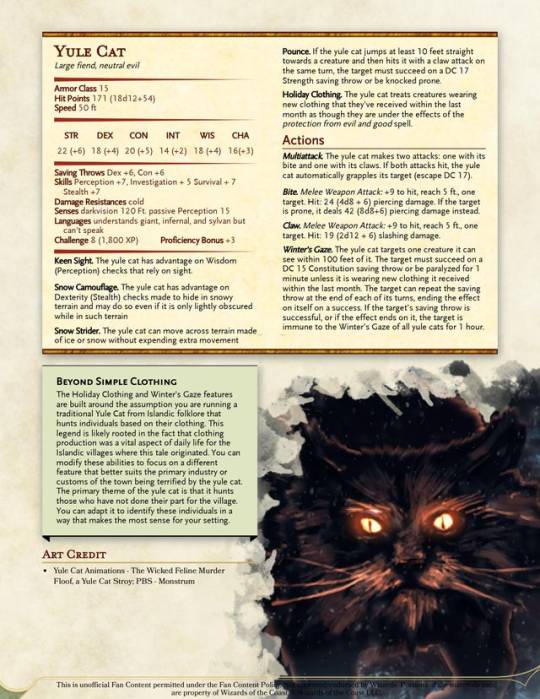
The massive scary Yule Cat from Icelandic Mythology has always amused me. I may have to write a One-Shot adventure for it some day. Homebrew monster stat-ed by Star Sail Games
#Yule Cat#Icelandic#Tradition#Mythology#Legend#Lore#Homebrew#Monster#Christmas#Star Sail Games#DnD#D&D#Dungeons and Dragons#5th Edition#5EDnD#Stats
481 notes
·
View notes
Photo

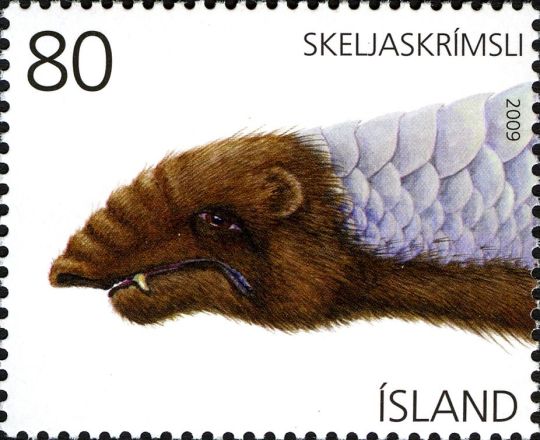
Skeljaskrímsli [Icelandic folklore]
Iceland has a very rich repertoire of folktales, myths, and legends, and many of them feature strange mythical creatures.
One of them is Skeljaskrímsli, a mysterious animal that supposedly came from the ocean. Legend has it that Grímur, the son of Hallgrímur, a local folklore character, spotted the creature when it came ashore one day during the winter. This supposedly happened near Flateyjardalur in the early 19th century. The strange animal had four limbs and its body was protected by a large shell. Where its skin was visible, its body was shiny, like the wet skin of a whale.
And when it moved, the creature made a strange rattling noise, as if multiple seashells were rattling together.
Whatever it was, it ran towards Grímur, who grabbed his gun and and shot the creature in the head. This injured Skeljaskrímsli, but it didn’t kill it. The animal quickly retreated into the sea and was never seen again.
Source:
https://grapevine.is/icelandic-culture/art/monster-of-the-month/2017/08/10/monster-of-the-month-skleljaskrimsli-shell-monster/
(image source 1: Jón Baldur Hliðberg)
(image source 2: an Icelandic post stamp from 2009, part of a series of post stamps depicting mythical creatures)
105 notes
·
View notes
Text
I'm now reading another of Heidi Ann Heiner's fairy tale collections. Sleeping Beauties: Sleeping Beauty and Snow White Tales from Around the World. Since I enjoyed Cinderella Tales from Around the World so much, I couldn't resist opening another of Heiner's books.
The first part of the book is devoted to the different international versions of Sleeping Beauty, the second part to the different versions of Snow White. This is followed by other tales of "sleeping beauties" that don't fit nearly into either category.
We start with the medieval Sleeping Beauty prototype tales from the 13th and 14th centuries.
*The earliest known prototype of the Sleeping Beauty story is the Norse and Germanic legend of Brynhild (a.k.a. Brunhild, Brunhilda, Brünnhilde, or other variations). This legend first appears in the Poetic Edda, the Prose Edda, and the Volsunga Saga from 13th century Iceland. It also appears in the German Nibelungenlied (although that version doesn't include the enchanted sleep), and its most famous modern adaptation is in Richard Wagner's four-opera cycle Der Ring des Nibelungen. The figure of Brynhild also inspired the Marvel superheroine Valkyrie.
**The Sleeping Beauty-like portion of the legend is this. The beautiful and strong-willed Brynhild is one of the valkyries, the warrior maiden servants (and in some versions daughters) of Odin (or Woden, Wotan, etc.) who preside over battlefields and bring the souls of fallen heroes to Valhalla. But Brynhild disobeys Odin by saving (or trying to save) the life of a warrior who was marked for death. (The man's identity, why he was meant to die, why she defends him, and whether she succeeds in saving him or not varies between versions.) As punishment, Odin banishes her to the mortal realm, pricks her with a "sleep thorn," and places her in a castle (or just on a rock) surrounded by a ring of fire, condemning her to sleep until a man brave enough to venture through the flames arrives to wake her and become her husband. (In some versions, she has attendants and servants who all sleep along with her.) Many years later, the fearless hero Sigurd, or Siegfried, succeeds in passing unharmed through the flames and wakes Brynhild by cutting off her valkyrie armor (or in later retellings influenced by Sleeping Beauty, with a kiss). The couple doesn't live happily ever after, however: their further adventures and eventual tragic fates are a story for another day.
**Even though it's a well-known fact that in "the original Sleeping Beauty stories," the prince (or his counterpart) impregnates the sleeping heroine and she wakes after she gives birth, no such thing happens in this earliest proto-version. If we assume that this really is the Western world's first tale of a heroine in an enchanted sleep, then it seems as if that sordid detail was a later addition.
*Next in Heiner's book come several medieval French Sleeping Beauty tales, mostly from Arthurian romances. These are the tales where we first see the motif of the heroine's love interest raping her in her sleep and fathering a child. Since few of them have ever been translated into modern English, the book simply summarizes them instead of printing them in full.
**The best-known of these stories, which most resembles Sleeping Beauty as we know it today, is the tale of Troylus and Zellandine from Le Roman de Perceforest, an Arthurian romance from 14th or 15th century France. In this tale, a knight named Troylus loves a princess named Zellandine. Then learns that while spinning, Zellandine has suddenly fallen into a deep sleep, from which no one can wake her. With the help of a spirit named Zephir and the goddess Venus, Troylus enters the tower where she lies and, at Venus's urging, he takes her virginity. Nine months later, Zellandine gives birth to a son, and when the baby sucks on her finger, she wakes. Zellandine's aunt now arrives, and reveals the whole backstory, which only she knew. When Zellandine was born, the goddesses Lucina, Themis, and Venus came to bless her. As was customary, a meal was set out for the three goddesses, but then the room was left empty so they could enter, dine, and give their blessings unseen; but the aunt hid behind the door and overheard them. Themis received a second-rate dinner knife compared to those of the other two, so she cursed the princess to someday catch a splinter of flax in her finger while spinning, fall into a deep sleep, and never awaken. But Venus altered the curse so that it could be broken and promised to ensure that it would be. When the baby sucked Zellandine's finger, he sucked out the splinter of flax. Eventually, Zellandine and Troylus reunite, marry, and become ancestors of Sir Lancelot.
***This tale provides some answers for questions that the traditional Sleeping Beauty raises. In the familiar tale, the king, the queen, and their court know about the curse, so why do they keep it a secret from the princess? Yes, they avoid upsetting her by doing so, but the end result is that when she finally sees a spindle, she doesn't know to beware of it. Why not warn her? And why is there a random old woman in the castle, spinning with presumably the kingdom's one spindle that wasn't destroyed, and why, despite living in the castle does she not know about the curse? (It's no wonder that most adaptations make her the fairy who cursed the princess in disguise.) Yet in this earlier version, there are no such questions: no one except the eavesdropping aunt knows about the curse, because it was cast in private, so no one can take precautions against it. Another standout details is the fact that Zellandine's sleep doesn't last for many years, and that the man who wakes her already loved her before she fell asleep. Disney didn't create those twists after all!
**The other medieval French Sleeping Beauty tales are Pandragus and Libanor (where Princess Libanor's enchanted sleep only lasts one night, just long enough for Pandragus to impregnate her), Brother of Joy and Sister of Pleasure (where the princess isn't asleep, but dead – yet somehow the prince still impregnates her – and is revived by an herb that a bird carries to her), and Blandin de Cornoalha (a knight who, refreshingly, doesn't impregnate the sleeping maiden Brianda, but breaks her spell by bringing a white hawk to her side).
*All of these early Sleeping Beauty tales are just one part of bigger poetic sagas. Maybe this explains why Sleeping Beauty is fairly light on plot compared to other famous fairy tales (i.e. we're told what's going to happen, and then it does happen, and it all seems inevitable from the start). Of course one argument is that it's a symbolic tale: symbolic of a young girl's coming-of-age, as the princess's childhood ends when she falls asleep and her adulthood begins when she wakes, and/or symbolic of the seasons, with the princess as a Persephone-like figure whose sleep represents winter and whose awakening represents spring. That's all valid. But maybe another reason for the flimsy plot is that the earliest versions of the tale were never meant to stand alone. They were just episodes in much longer and more complex narratives.
@ariel-seagull-wings, @adarkrainbow, @themousefromfantasyland
#sleeping beauty#fairy tale#variations#sleeping beauties: sleeping beauty and snow white tales from around the world#heidi ann heiner#norway#iceland#germany#norse mythology#france#england#italy#tw: rape#tw: cannibalism
37 notes
·
View notes